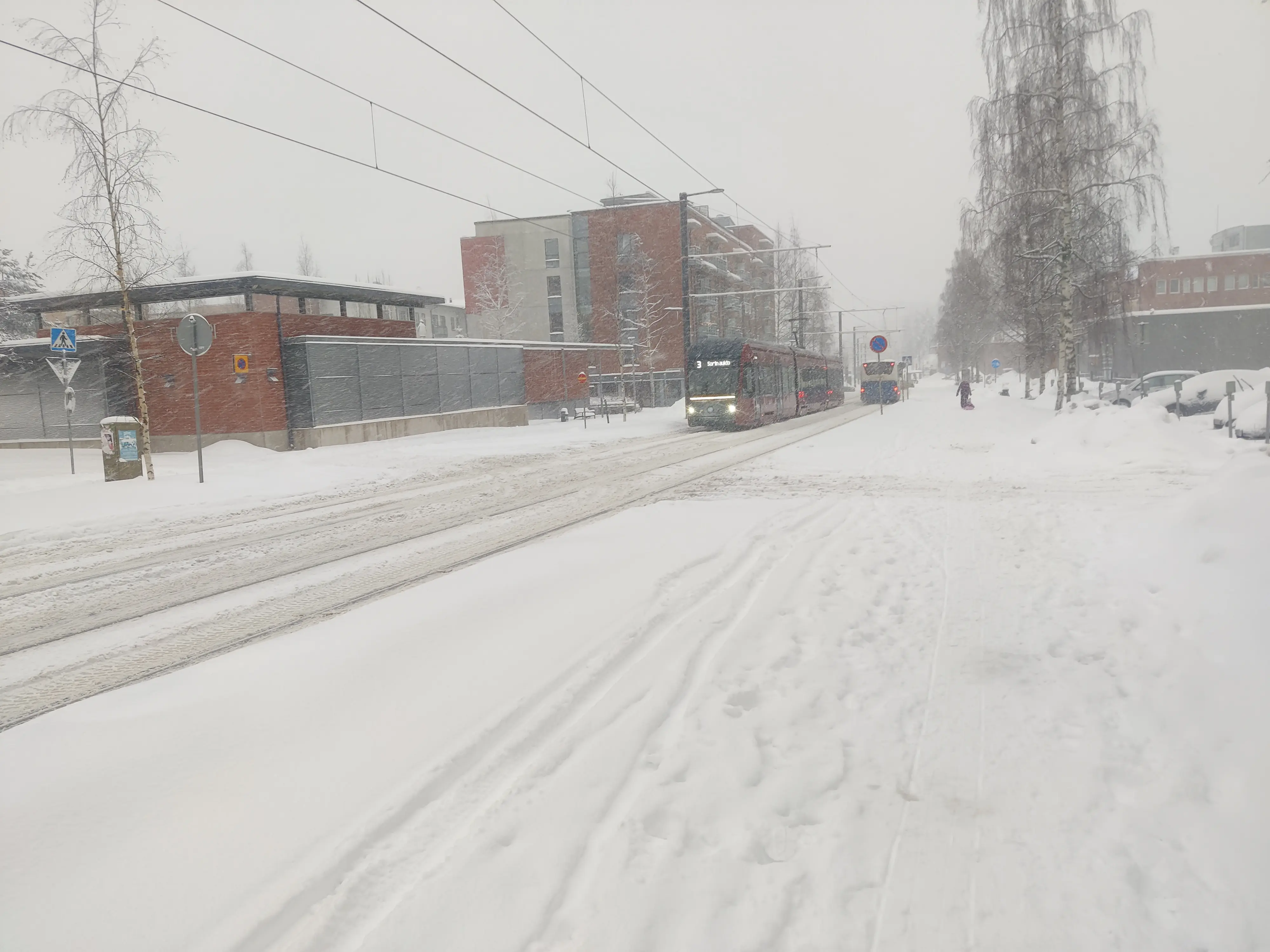this post was submitted on 14 Dec 2024
72 points (100.0% liked)
Trams, Trolleys and Streetcars
11 readers
7 users here now
A Community for the interessting world of Trams, Trolleys and Streetcars!
founded 11 months ago
MODERATORS
you are viewing a single comment's thread
view the rest of the comments
view the rest of the comments

Ive always wondered how much snow is too much for trams like this
Generally railed vehicles cut through snow pretty well. The sheer weight of the vehicle, and the thin metal wheel on a track, will push any loose snow out of the way. Any snow that doesn't get pushed away, actually melts under the pressure of the passing vehicles, which means with frequent enough traffic, the tracks are kept clear.
Solid ice, or a large buildup of snow that can begin gathering in front or in the rail groove, can become a problem. If it's bad enough, derailment can occur.
Snow or water that then freezes can get into switches along a route, preventing them from being actuated.
The first is generally solved by maintenance cars that clear the tracks more thoroughly than just a normal one running by. These would run in the morning, and between normal service if the conditions require it.
Switches in places that get snow are typically heated, keeping them clear of snow and ice at all times.
Overrall, trams keep running fine LONG past where buses and cars become unable to drive. In my city, there have been many times when bus service has shut down during winter storms, while trams just kept going all the way through.
That's not to say derailments don't happen here. They do, but snow storms don't mean the tram network gets shut down. They just adapt to the situation and keep going as well as they can.
Thank you for such a detailed explanation! I've always asked myself why the busses in my city get cancelled in the winter but not the trams, and now it makes so much sense :D